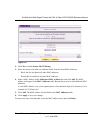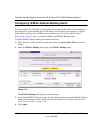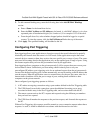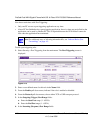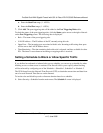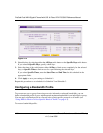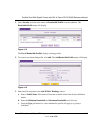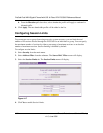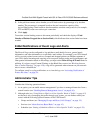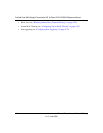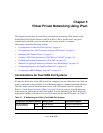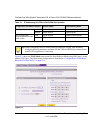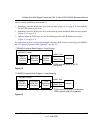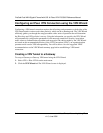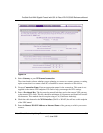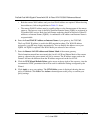
ProSafe Dual WAN Gigabit Firewall with SSL & IPsec VPN FVS336G Reference Manual
Firewall Protection and Content Filtering 4-33
v1.2, June 2008
5. In the pull-down menu, select whether you will limit sessions by percentage or by absolute
number. The percentage is computed based on the total connection capacity of the
device.When setting a limit based on absolute number, note that some protocols (for example,
FTP and RSTP) create two sessions per connection.
6. Click Apply.
To monitor session limiting, return to this menu periodically and check the display of Total
Number of Packets Dropped due to Session Limit, which indicates that session limits have been
reached.
E-Mail Notifications of Event Logs and Alerts
The Firewall Logs can be configured to log and then e-mail denial of access, general attack
information, and other information to a specified e-mail address. For example, your VPN firewall
will log security-related events such as: accepted and dropped packets on different segments of
your LAN; denied incoming and outgoing service requests; hacker probes and login attempts; and
other general information based on the settings you input on the Firewall Logs & E-mail menu. In
addition, if you have set up Content Filtering on the Block Sites screen (see “Blocking Internet
Sites (Content Filtering)” on page 4-20), a log will be generated when someone on your network
tries to access a blocked site.
To configure e-mail or syslog notification, or to view the logs, see “Activating Notification of
Events and Alerts” on page 9-4.
Administrator Tips
Consider the following operational items:
1. As an option, you can enable remote management if you have to manage distant sites from a
central location (see “Enabling Remote Management Access” on page 8-10).
2. Although rules (see “Using Rules to Block or Allow Specific Kinds of Traffic” on page 4-2)
are the basic way of managing the traffic through your system, you can further refine your
control with the following optional features of the VPN firewall:
• Groups and hosts (see “Managing Groups and Hosts (LAN Groups)” on page 3-5)
• Services (see “About Services-Based Rules” on page 4-3)
• Schedules (see “Setting a Schedule to Block or Allow Specific Traffic” on page 4-29)



